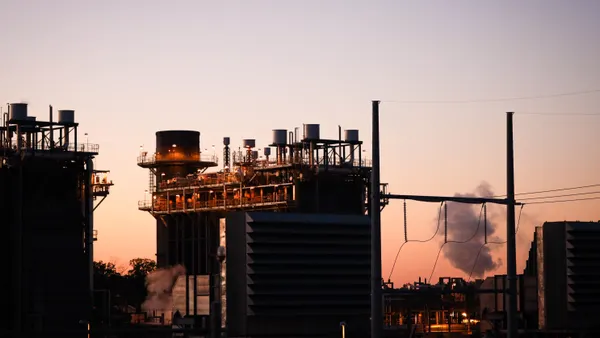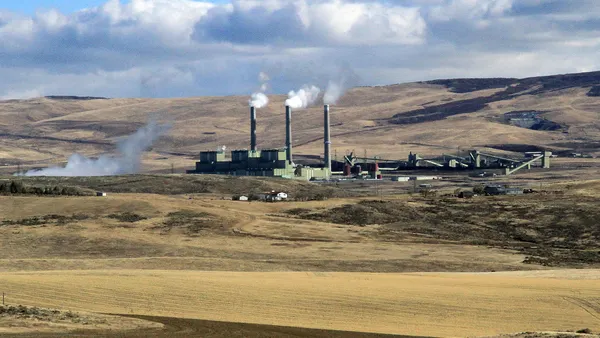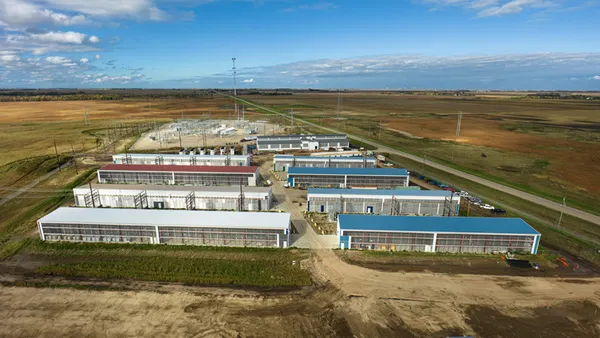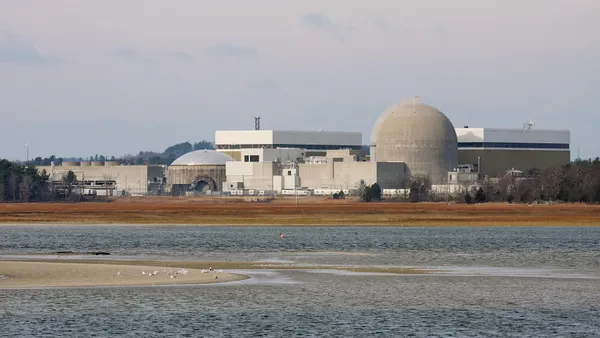UPDATE: Jan. 5, 2020: Xcel Energy on Monday announced plans to close the coal-fired Hayden Generating Station, with Unit 2 retiring by the end of 2027 and Unit 1 by the end of 2028. Those units had originally been scheduled to retire in 2036 and 2030, respectively. The decision was made along with plant co-owners PacifiCorp and Salt River Project. Xcel said it will include details on the closure in an electric resource plan the utility will file with the Colorado Public Utilities Commission in March.
Environmental advocates cheered the decision but also questioned if the plant could be closed sooner. Western Resource Advocates (WRA) attorneys say the utilities could achieve greater carbon emission reductions and ratepayer benefits by moving quicker to close the plant. "Accelerated retirement dates and other tools ... should be considered as part of Xcel’s forthcoming electric resource planning process,” Erin Overturf, deputy director of WRA's Clean Energy Program, said in a statement.
There are about 75 employees at the Hayden plant, and Xcel has said no layoffs are anticipated.
Dive Brief:
- The Colorado Air Quality Control Commission (AQCC) on Wednesday backed away from a plan to accelerate the closure of three coal plants, after regulators expressed concerns about the "feasibility of the transitions if the closure dates are moved up." Commissioners had given preliminary approval to the plan in November.
- The plants impacted by the decision include Tri-State Generation and Transmission's Craig 3 unit; Platte River Power Authority's Rawhide plant, and Colorado Spring's Nixon facility. AQCC had also been considering accelerating the closure of Xcel Energy's Hayden plant, but it was not included in the preliminary decision.
- Environmental advocates estimated the shutdown proposal would have saved consumers $68 million relative to already-planned shutdown dates.
Dive Insight:
Colorado utilities say they are developing plans to meet the state's 2030 carbon emissions goals, but conservation groups see a lost opportunity for the state to accelerate the change.
"From our perspective, what is important about this case is the proposal the commission rejected would have achieved 19 million metric tons of carbon reductions, which is huge," said Matthew Gerhart senior attorney with the Sierra Club's environmental law program.
Sierra Club and the National Parks Conservation Association were intervenors in the state's regional haze rulemaking and brought the early-closure proposal before the AQCC. The two groups were represented by Earthjustice.
Their proposal called for mothballing five generating units, most a year ahead of schedule. One unit at the Hayden plant could have been shuttered eight years early.
In a statement, the groups said the AQCC "missed an important opportunity" to make progress on the state's goals and address pollution that impacts national parks, public health and climate. State law requires Colorado utilities to cut carbon emissions in half by 2030, and 26% below 2005 levels in the next five years.
In Wednesday's meeting, the AQCC deliberated in executive session before voting unanimously to backtrack on early closures and instead adopt a regional haze rule that aligned with a proposal from the state's Air Pollution Control Division. Utilities supported that plan, as did the Colorado Energy Office (CEO), which called for regulators to leave those decisions to the state's Public Utilities Commission and individual municipal utility governing boards.
"Those entities will not only take account of the safety and reliability assessments and environmental goals, but will also strongly consider the cost and affordability of those plans," CEO Executive Director Will Toor said in an undated letter to the AQCC.
Following executive session deliberations, AQCC Commissioner Jana Milford said she was changing her preliminary vote "with great regret," but cited "reservations about the adequacy of the technical information that was provided to support the alternative proposal, in terms of the feasibility of the transitions if the closure dates are moved up."
In a statement, Tri-State said its current shutdown plan for Craig Station "will meet or exceed federal requirements to improve visibility in our national parks and wilderness areas." The utility, which has faced criticism for a coal-heavy generation mix, is making strides to decarbonize its portfolio and has filed a plan with state regulators that includes a "preferred scenario" targeting an 80% greenhouse gas emission reduction in the state.
Tri-State's proposal calls for 1,850 MW of additional renewable generation, along with more than 200 MW of energy storage.
Platte River Power Authority issued a statement saying it was "pleased the AQCC adopted the Air Pollution Control Division’s proposed regional haze rule, which affirms Rawhide Unit 1’s voluntary retirement date of Dec. 31, 2029."
The utility also noted the Rawhide Energy Station contains one coal unit, multiple gas peaking units and one solar farm. A second solar project is expected to become commercially operational in the next few weeks, a spokesperson said.
The AQCC had also been considering requiring Xcel Energy to close its Hayden coal plant early, but the regional haze decision ends that proposal.
In a statement, Xcel said it was "pleased with the decision which leaves the broader issues of resource planning to the Colorado Public Utilities Commission."
Xcel said it is on a path of reducing carbon by 80% by 2030, and has "a vision to provide our customers across our entire service territory with 100% carbon free electricity by 2050." The utility is finalizing a clean energy plan it will file with the PUC by March.













